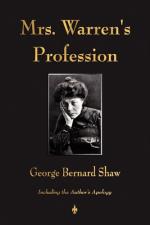To carry conviction on this point, I will take the extreme course of narrating the plots of two plays witnessed within the last ten years by myself at London West End theatres, one licensed by the late Queen Victoria’s Reader of Plays, the other by the present Reader to the King. Both plots conform to the strictest rules of the period when La Dame aux Camellias was still a forbidden play, and when The Second Mrs Tanqueray would have been tolerated only on condition that she carefully explained to the audience that when she met Captain Ardale she sinned “but in intention.”
Play number one. A prince is compelled by his parents to marry the daughter of a neighboring king, but loves another maiden. The scene represents a hall in the king’s palace at night. The wedding has taken place that day; and the closed door of the nuptial chamber is in view of the audience. Inside, the princess awaits her bridegroom. A duenna is in attendance. The bridegroom enters. His sole desire is to escape from a marriage which is hateful to him. An idea strikes him. He will assault the duenna, and get ignominiously expelled from the palace by his indignant father-in-law. To his horror, when he proceeds to carry out this stratagem, the duenna, far from raising an alarm, is flattered, delighted, and compliant. The assaulter becomes the assaulted. He flings her angrily to the ground, where she remains placidly. He flies. The father enters; dismisses the duenna; and listens at the keyhole of his daughter’s nuptial chamber, uttering various pleasantries, and declaring, with a shiver, that a sound of kissing, which he supposes to proceed from within, makes him feel young again.
In deprecation of the scandalized astonishment with which such a story as this will be read, I can only say that it was not presented on the stage until its propriety had been certified by the chief officer of the Queen of England’s household.




